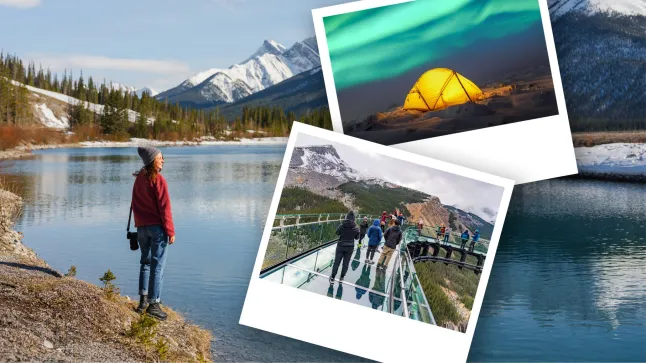Travel
Incentive Travel Programs Boost Tourism in Asia-Pacific, Europe, and North America with $9.82 Billion Market Value by 2028: Here’s What You Need to Know! – Travel And Tour World

Tuesday, December 10, 2024
The global incentive tourism market is poised for steady growth, with projections indicating an increase from $7.18 billion in 2023 to $9.82 billion by 2028. This growth represents a compound annual growth rate (CAGR) of 0.5% for the forecast period. The expansion is fueled by factors such as globalization, increased disposable income, technological advancements, and the rising demand for unique, sustainable travel experiences.
Key Drivers of Market Growth
- Experiential Travel
Experiential travel, which emphasizes immersive and authentic cultural experiences, is a significant driver of the incentive tourism market. Travelers increasingly seek deep, meaningful connections with destinations, moving beyond traditional sightseeing to engage in local customs and activities.Incentive tourism supports this trend by offering personalized rewards that enhance employee and participant engagement. For instance, organizations are leveraging incentive trips to promote team-building, foster loyalty, and reward high performance. This aligns with the broader trend of creating memorable experiences rather than focusing solely on material incentives. - Sustainable and Wellness Tourism
The increasing importance of health, wellness, and sustainability is shaping consumer preferences. More travelers are opting for eco-friendly trips, aligning with government policies promoting sustainable tourism. Incentive programs are adapting by incorporating activities like eco-tourism, cultural excursions, and wellness retreats into their offerings. - Post-Pandemic Resilience
The tourism sector has demonstrated remarkable resilience post-pandemic. According to the United Nations World Tourism Organization (UNWTO), international tourist arrivals in the first quarter of 2023 surged to 80% of pre-pandemic levels. This rebound highlights the recovery of the incentive tourism segment, driven by companies’ renewed focus on rewarding and engaging their teams.
Regional Insights
- North America: The largest market for incentive tourism in 2023, benefiting from a robust corporate sector and advanced travel infrastructure.
- Asia-Pacific: Predicted to be the fastest-growing region, driven by economic growth, increasing globalization, and expanding air connectivity.
- Europe: Maintains a strong presence, with countries like the United Kingdom and France offering rich cultural and historical experiences that appeal to incentive travelers.
The market also extends to other regions, including South America, the Middle East, and Africa, each showcasing unique tourism offerings that cater to incentive travel.
Market Segmentation
The incentive tourism market can be segmented as follows:
- Type: Eco-tourism, adventure tourism, beach tourism, cultural tourism, and wildlife tourism.
- Tourist Type: Independent travelers, tour groups, and package travelers.
- Booking Channel: Phone bookings, online bookings, and in-person bookings.
- Age Group: Primarily targeting the 26-55 age demographic, with tailored experiences for various preferences.
- Industry Focus: Key sectors include finance, technology, and healthcare, driving demand for incentive programs.
Trends Shaping the Future
- Technology-Enabled Personalization
Companies are investing in technology to deliver personalized travel experiences. Advanced data analytics and artificial intelligence enable tailored itineraries, ensuring that participants feel valued and engaged. - Innovative Incentive Programs
Leading players like Carlson Wagonlit Travel, Maritz Global Events, and Creative Group are designing innovative programs to streamline planning and execution. These initiatives aim to increase employee motivation and strengthen business relationships. - Expansion of Flight Routes
Increased connectivity through expanded international and domestic flight routes facilitates smoother travel, making incentive tourism more accessible to a global audience. - Luxury Travel Experiences
As disposable income grows, there is a rising demand for luxury travel. High-end resorts, private tours, and exclusive cultural experiences are becoming key components of incentive travel packages.
Notable Players in the Market
The incentive tourism market features prominent players such as:
- Carlson Wagonlit Travel
- Maritz Global Events Inc.
- Creative Group Inc.
- Aimia Inc.
- Access Destination Services
These companies are spearheading efforts to integrate sustainability, innovation, and personalization into their offerings.
Challenges and Opportunities
While the market faces challenges such as economic fluctuations and geopolitical uncertainties, the opportunities far outweigh the risks. The industry’s shift towards sustainability and experiential travel aligns with evolving consumer preferences, ensuring long-term growth.
Additionally, government support in developing tourism infrastructure and promoting eco-friendly initiatives provides a favorable environment for the incentive tourism market.
Future Outlook
The incentive tourism market’s steady growth reflects its adaptability and alignment with modern travel trends. With companies increasingly recognizing the value of travel incentives in fostering loyalty and enhancing productivity, the sector is expected to play a pivotal role in the global tourism landscape.










